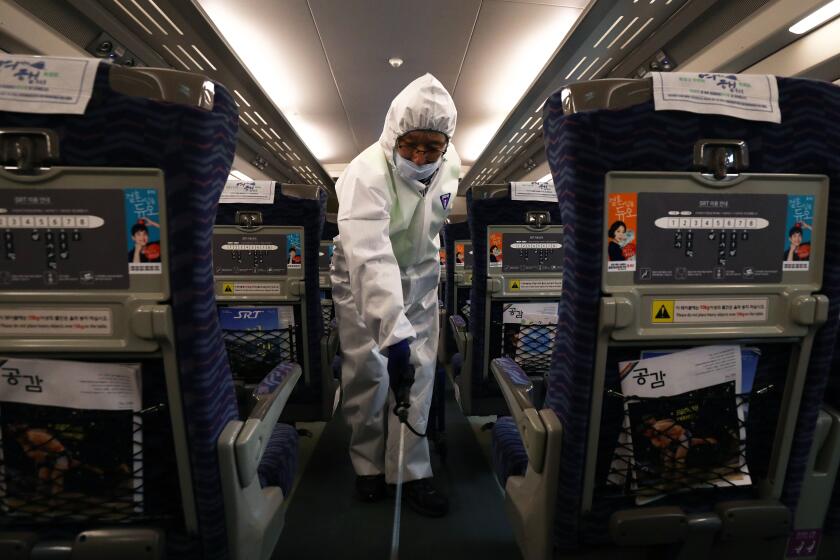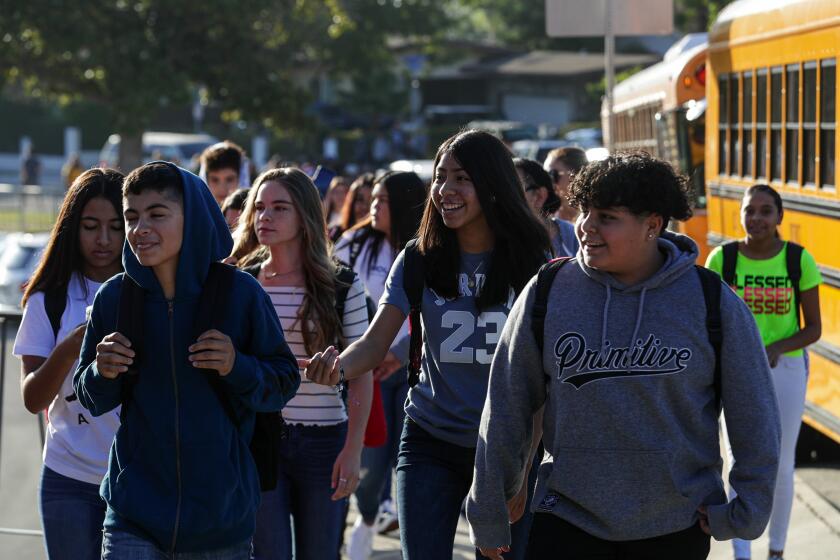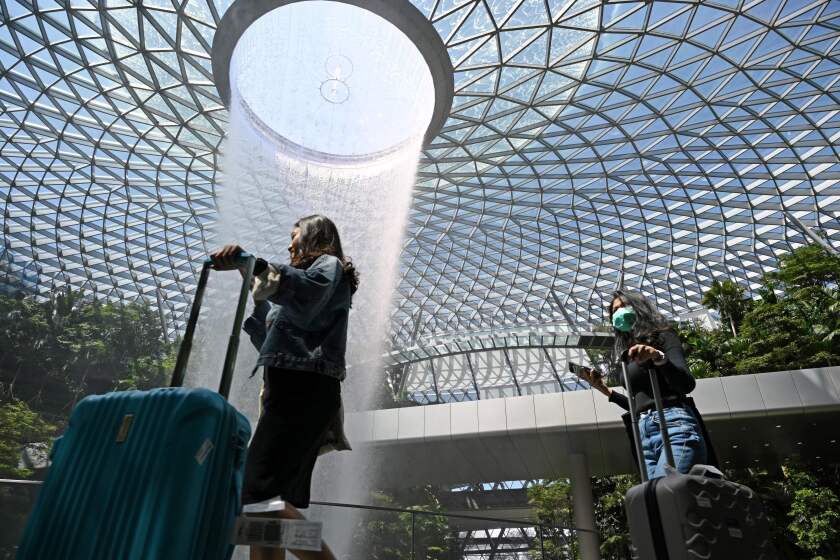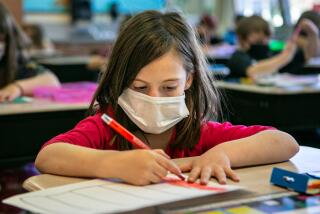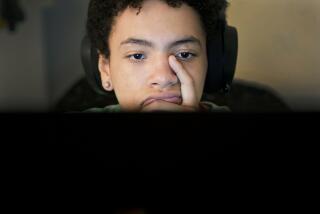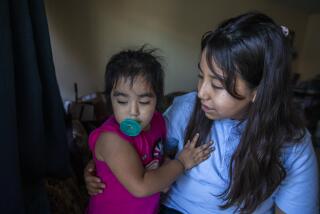What if schools are closed for weeks? That’s already the reality in parts of Asia
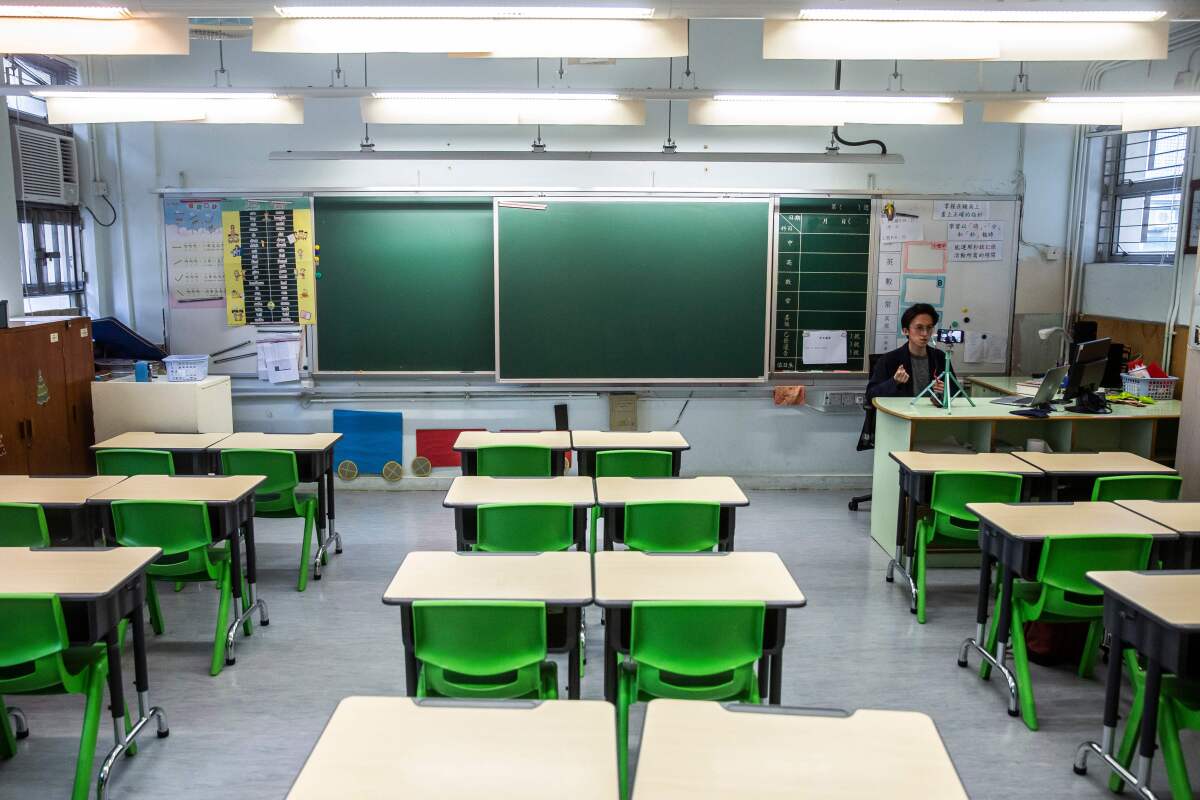
Homework delivered via WhatsApp. “Minecraft” and Netflix instead of lectures and gym classes. Refrigerators as blackboards, harried parents, bored children — and no end in sight to what one 7-year-old calls a “nightmare.”
School closures are just beginning to ripple across the United States as authorities try to contain the spreading coronavirus, but across swaths of Asia, the Middle East and Europe, children have already been kept home from classes for several nerve-racking weeks.
Thirty-nine countries, including China, South Korea and Japan, have imposed nationwide school closures affecting more than 421 million students from elementary school through the university level, according to UNESCO.
“I was kind of happy to stay home, but now I really want to go to school,” said O Hyun-jin, an 11th-grader in Daegu, the epicenter of South Korea’s coronavirus outbreak, where the typical start of the school year March 2 has been pushed back at least three weeks. O hasn’t set foot on campus since winter break began in December.
In an additional 22 countries that have announced localized closures — from India and France to the United States — millions more out-of-school children are studying online or missing lessons altogether, forgoing sports and other extracurricular pursuits, not seeing their friends and facing less time to prepare college applications.
All of it is forcing working parents to make difficult compromises.
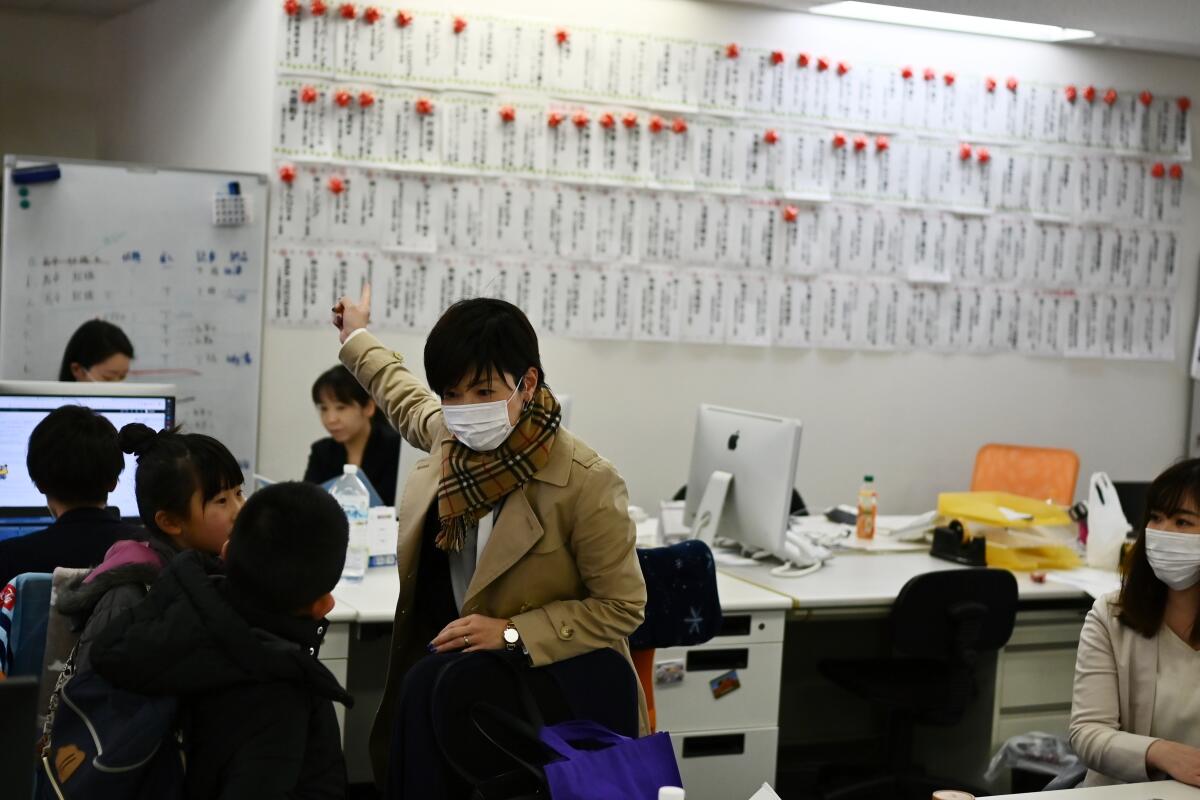
“I’m not happy about missing school. I want this to end,” said 13-year-old Yeung Tak-shing of Hong Kong, where public and government-subsidized schools have been closed since the Lunar New Year vacation started Jan. 22. The schools are not due to reopen until April 20.
Attending the prestigious Carmel Divine Grace Foundation Secondary School was a dream come true for Yeung. The seventh-grader is a member of the institution’s celebrated robotics team, which sent 20 students to the International Robot Olympiad in Thailand last year, winning a bevy of medals.
Yeung has spent much of the last six weeks confined to his family’s sixth-floor, 500-square-foot public housing unit, which is cluttered with his medals and trophies from middle school science and robotics competitions.
Before the outbreak, Yeung would wake up at 6:50 a.m., put on his tie and uniform and take a 35-minute subway ride to school. On days the robotics team met, he wouldn’t get home until 6:30 p.m.
Now, Yeung rolls out of bed at 9 a.m. and plays “Minecraft” online or “Grand Theft Auto 5” on his PlayStation 4 before doing a few hours of schoolwork online — sometimes interrupted by his unreliable Wi-Fi connection. He rarely gets out of his pajamas, though he musters the motivation to do a few sit-ups on instructions from his PE teacher.
His mother, Paula, a 50-year-old waitress, has had to ask her mother and other relatives to occasionally take turns watching her son at home while she and her husband, a repairman, go to work.
Business at her cafe has tanked in the last two months, giving her more time to worry. As working-class immigrants from China, she said, they felt it was important that her son seize the opportunity to go to university. She fears the current academic year could be wasted.
“He’s really clever,” she said. “He’s always had good grades. I know he’s going to succeed in technology one day. I just hope we can all stay healthy.”
Governments and health officials around the world are trying to mitigate the spread of the coronavirus outbreak.
Among teenagers steeped in South Korea’s hyper-competitive, education-focused culture, the school closures affecting more than 10 million students brought anxiety about whether the late start to the school year would jeopardize their college admission prospects.
Even more than missing school, 16-year-old O said she feared not being able to go to hagwon, the private cram schools where she typically spends 40 hours a week preparing for next year’s college entrance exam.
Many of the hagwons in her neighborhood were in an area with a high number of infections. Some of her friends were placing academics over health risks and still attending cram-school classes. Her parents wouldn’t let her.
So she’s been parked at her desk at home for eight to 10 hours a day studying. Occasionally, she’ll take breaks to play “Battleground,” meeting up with her friends in the virtual world of video games.
“I’m trying not to fall behind,” she said.
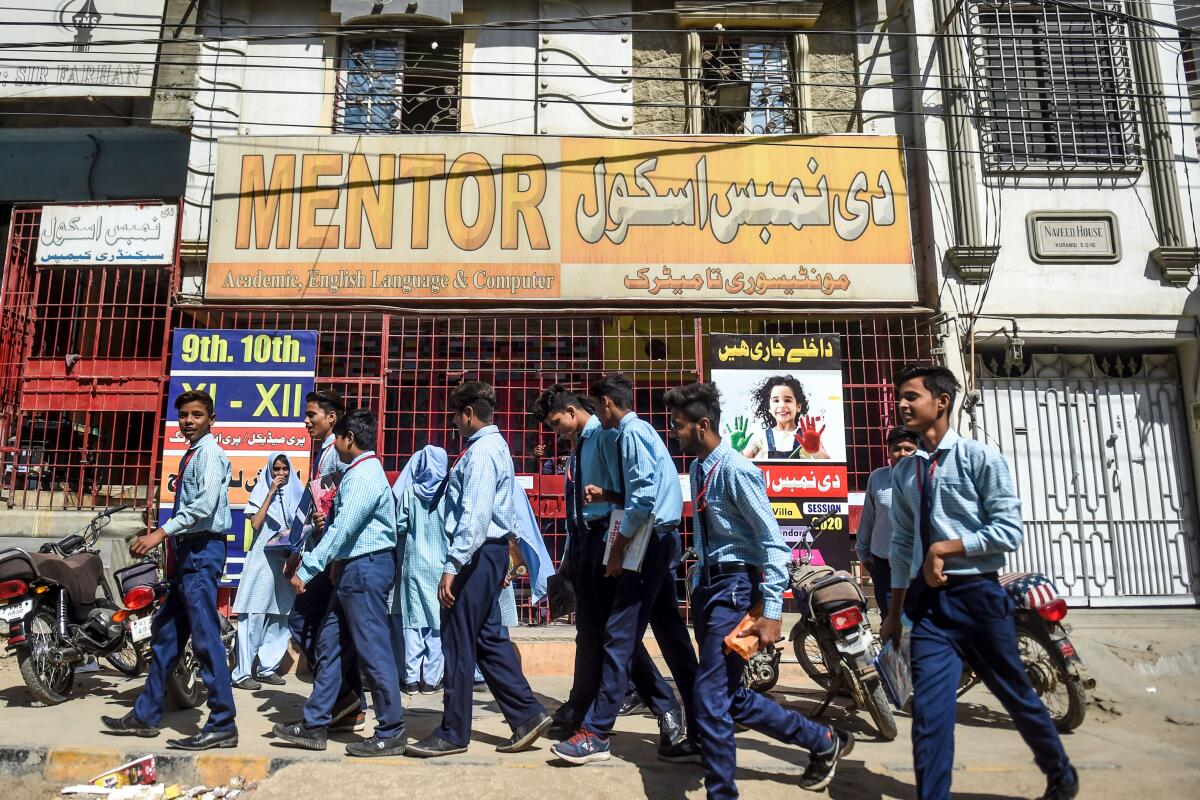
Although children have so far appeared less susceptible to the disease known as COVID-19 — which has sickened at least 140,000 people worldwide and killed more than 5,300 — medical research suggests that closing schools has helped slow down outbreaks in the past. One of the reasons is that more parents stay home, reducing the levels of social contact that can transmit disease.
But closures come with huge social and economic costs, particularly if they drag on. Even as affordable home and mobile internet access has expanded to much of the world, the United Nations Educational, Scientific and Cultural Organization warns that online learning is not accessible for all children and that extended closures can eat into families’ incomes and raise dropout rates.
Some parents say they want LAUSD schools to close as the novel coronavirus spreads. But L.A. Unified officials have yet to decide to do that.
For several days this week, Fahmida Riaz set aside her work as a freelance journalist in Karachi, Pakistan’s largest city, to stay home and supervise her 17-year-old son Shiraz’s high school exams. With no online testing capability, the school couriered the test sheets to their house after authorities closed the schools Feb. 26.
“She is very strict,” Shiraz said. “She doesn’t allow me extra time and sent the papers back to the school as soon as I finished them.”
Both he and his fifth-grade brother, whose school also lacks e-learning facilities, busy themselves playing video games late into the night. Neither goes out much because of virus fears, said their father, 50-year-old Riaz Sohail.
“My wife’s work is affected as she spends almost all day with the children,” he said. And with a new coronavirus case surfacing in Karachi this week, he added, he didn’t see schools reopening anytime soon.
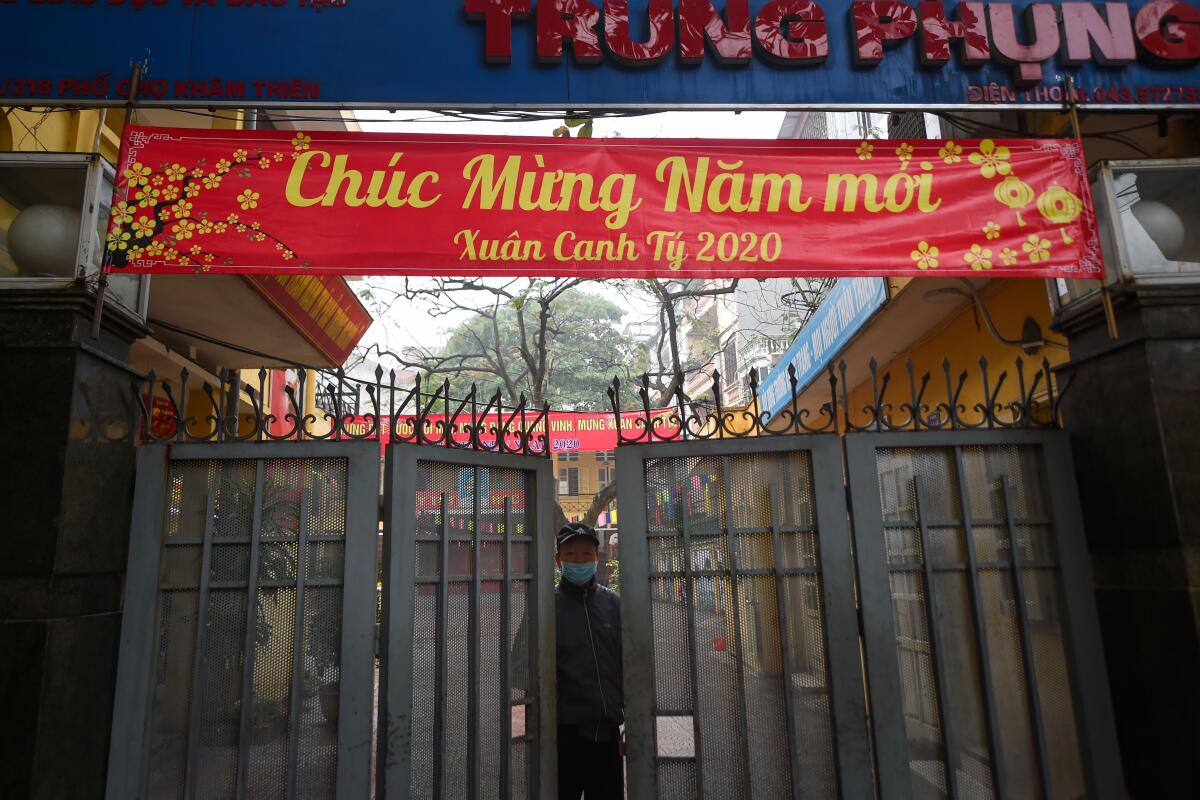
In Hanoi, Vietnam’s capital, Chi Cong and his wife Dung, who run an airline ticketing agency, have taken turns staying home with their three children since schools were closed Feb. 3.
Their 15 employees have taken on added responsibility — though that has been offset somewhat by a 50% decline in business due to the virus, said the 38-year-old Chi.
“I have to organize the company and the family to work together to solve this,” he said.
The hardest thing, he said, was the disruption to the children’s schedules. They are sad at home, missing their friends, struggling to focus on online homework and their teachers’ video lessons.
But he believed the closures were appropriate because the outbreak “is becoming more and more complex. At this time, closing [schools] will be better.”
To battle the COVID-19 coronavirus, Singapore mobilized a system of state control that is one of the most efficient in the world.
Facing one of the severest outbreaks, authorities in Iran have shut schools across more than a dozen provinces. In Khuzestan province, a photo of a teacher using the side of her refrigerator as a whiteboard went viral.
In Tehran, 7-year-old Amir Mahdi uploads homework via WhatsApp, sings songs with friends over video chat and watches livestreams of classes each morning, but it’s still not enough to keep him from feeling restless.
“He was crying at noon saying that he hates this house and this nightmare,” said Amir’s mother, Nura Hosseini.
She bought him arts and crafts supplies, encourages him to cook and clean with her and makes him do spelling drills online. But after being cooped up for nearly three weeks inside their two-story house that they share with extended family, both are feeling claustrophobic and are struggling to fill the days.
“I am worried about his health. I am trying to make him tired by physically doing house chores, but I’m so tired because I cannot entertain him,” she said. “I even repaired an old cellphone so that he can play with it.”
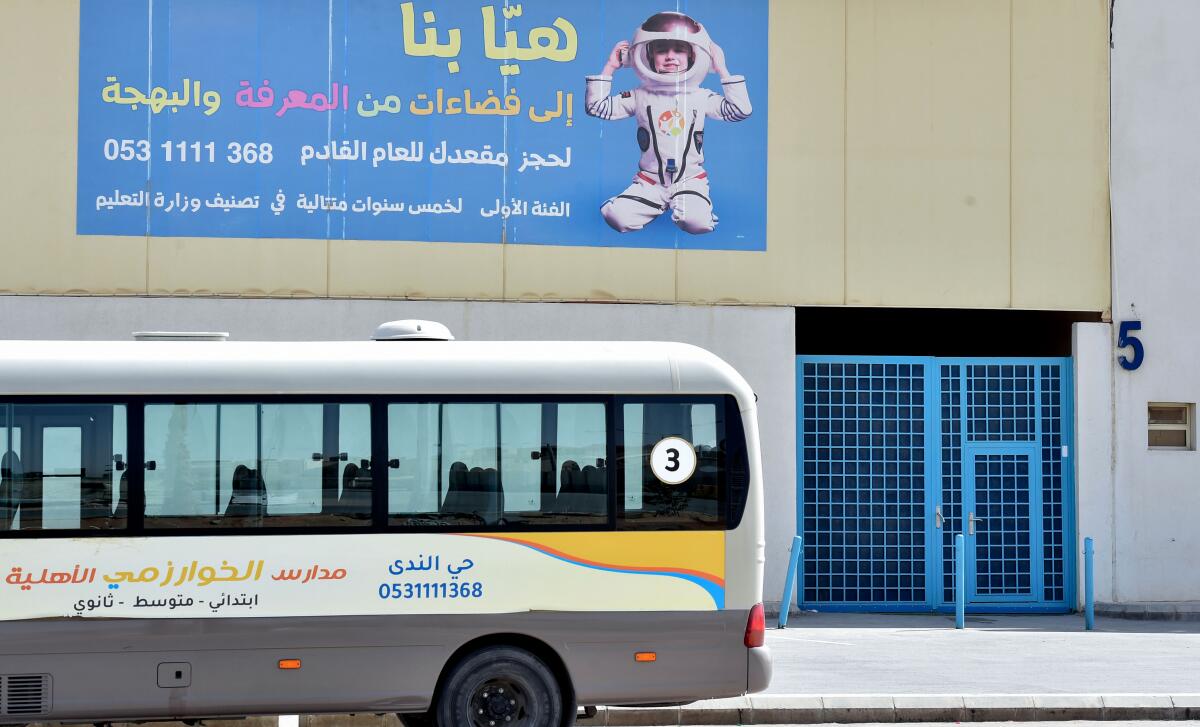
In the United Arab Emirates, the typical places that children congregate when not at school — at play dates and mega-malls — are considered off-limits as families practice social distancing.
Yasmine Khayal, a corporate lawyer in Dubai who has three children ages 6 to 11, said she was using the time to upload lesson plans, videos and other educational materials to ramp up virtual learning.
“It all sounds good in theory, but we won’t have interactions with the teachers,” she said. “I’ll have to be more involved, and I’m not sure how that will affect me with work, and everyone is unsure how it’s going to be in practice.”
Back in Hong Kong, 13-year-old Yeung has occasional flashes of panic about contracting the coronavirus. But it’s the solitude in his three-bedroom flat that tests him most days.
He often stares out his window at a park that’s mostly empty. His connection to the outside world is a desktop computer surrounded by stacks of library books — including Roald Dahl’s “The Witches,” a dark fantasy that revolves around secret societies of child-hating witches — that would be overdue if school was open.
Yeung is desperate to return so he can complete the project he left unfinished in his favorite design and technology class, a 3-D-printer-made LED light. The most devastating news, however, is yet to come.
Yeung was expecting to appear at the Robot Olympiad for the first time this summer, an event that right now appears unlikely.
“I know it’s going to be canceled,” he said. “It’s not easy to accept because we worked so hard for this.”
Bengali and Pierson reported from Singapore, and Kim from Seoul. Times staff writers Nabih Bulos in Beirut and Melissa Etehad in Los Angeles, special correspondent Aoun Sahi in Islamabad, Pakistan, and a special correspondent in Tehran contributed to this report.
More to Read
Sign up for Essential California
The most important California stories and recommendations in your inbox every morning.
You may occasionally receive promotional content from the Los Angeles Times.
